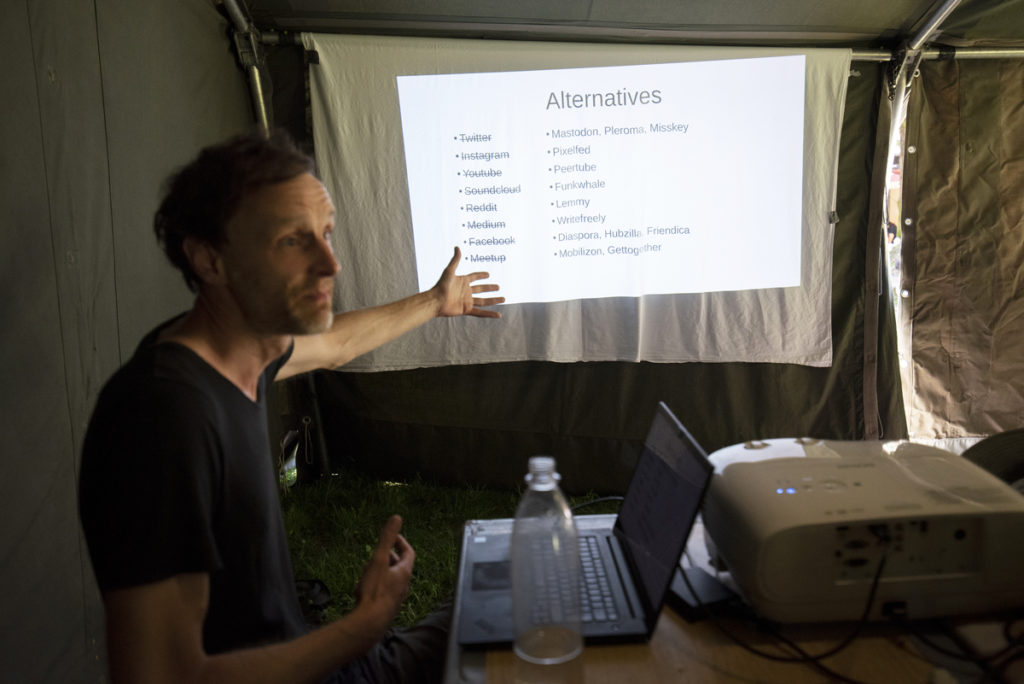Tuesday morning was busy. The group of music and technology enthusiasts who formed a community project focused on the development of a multi-sensorial synthesizer called (for now) OctoSense continued their work under the guidance of Václav Peloušek (Bastl Instruments). The development of an interface that will enable the simultaneous use of different sensors to synthesize sound and control other devices started already in Ljubljana and continues now at PIFcamp.
By now, most of the OctoSense prototypes had been built and the group started the testing process. Julijan and Jakob wrote the basic firmware to test the interface elements, the buttons and LEDs, but they still need to test the analog circuits and inputs just to see what of the hardware works and what doesn’t, says Václav. The idea is that this device will be able to do calibration, data extraction and mapping. But how will this device differ from what is already available out there on the “market”? “Normally you write a custom piece of code for all these parts, you connect the sensor to an Arduino, you hardcode a piece of code for the calibration, if you need some data extraction you keep wrestling with that for another day and then you somehow map and hardcode it… so, it is a lengthy process that requires a lot of programming”, explains Václav. But with the Octosense interface, you will be able to do all of this in just a couple of minutes and also make adjustments in the process, during a performance for example.
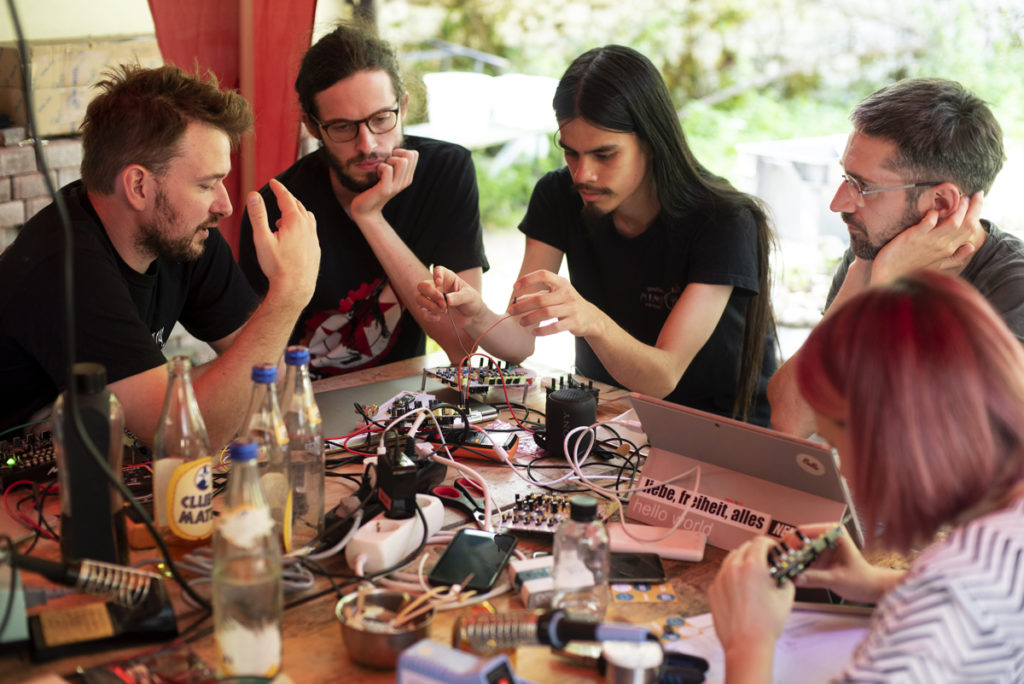
However, there is still a lot of work that needs to be done before the Octosense can be released as a working product. At the end of the week, the calibration part will hopefully be complete and in September, when Vaclav returns to Ljubljana for the second part of his residency with Projekt Atol and Osmo/za, the group will focus on the data extraction and mapping. If everything goes according to plan, the user will be able to easily do all these things with just a few button clicks. What the team thus also needs to develop is the user interface for all these parts.
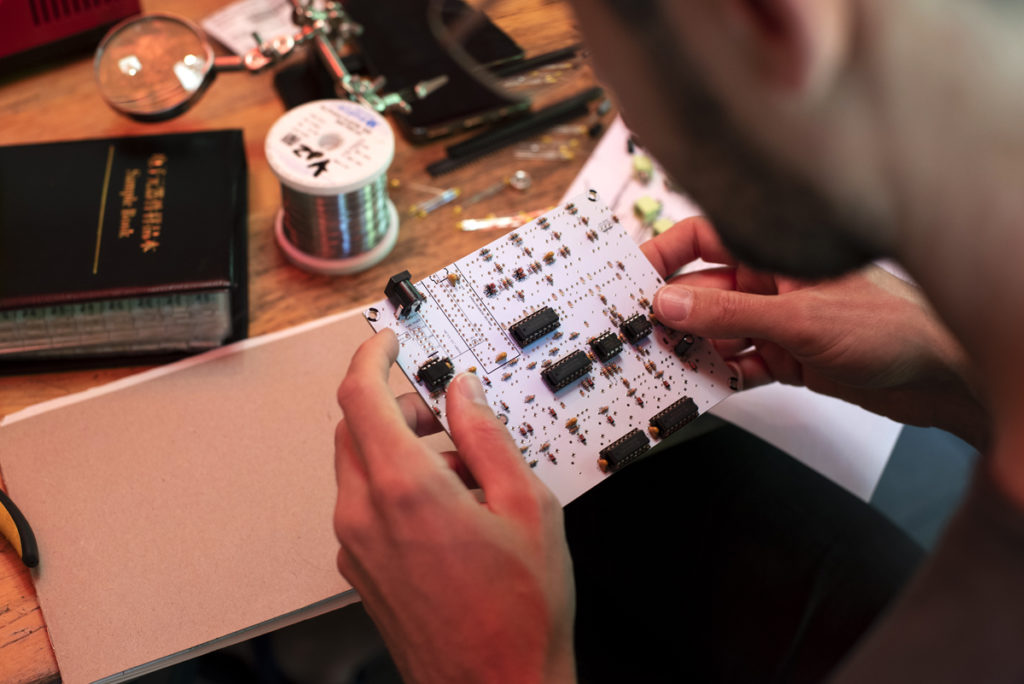
In the late morning, Joreg invited everybody to the main tent to talk about alternative social media: despite the tropical heat – caused by the “greenhouse effect” of the tent under midday’s sun – many decided to attend the workshop.
While presenting the existing alternatives to mainstream social media, many important concepts were touched: closed systems vs open ones that allow interoperability, the role of corporations and the dilemma of the active user vs the passive consumer…
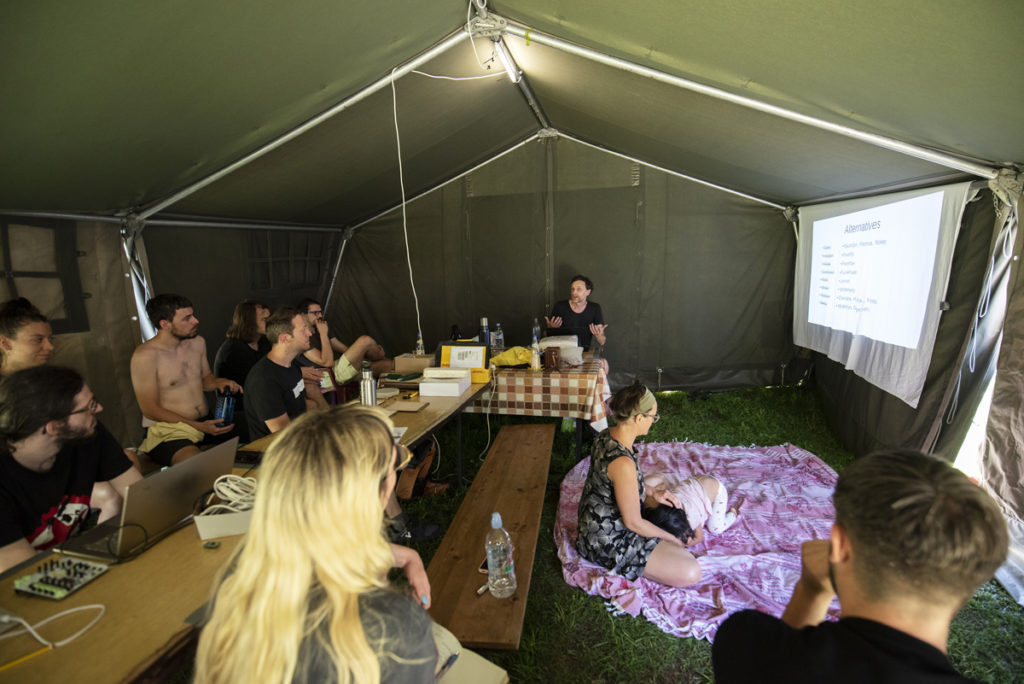
The workshop then focused on Mastodon, one of the most successful social media alternatives, and on the ActivityPub protocol and the connected Fediverse, the ensemble of interconnected servers used for web publishing, and gave rise to a long, wide, participated and interesting debate, touching on many important topics, from active usage of technology in general to censorship on the internet.
After lunch Maggie Kane led a workshop focused on memes as part of her on-going DIY meme project where atendees can design functional circuits that look like popular memes & etch their designs onto copper PCB boards.
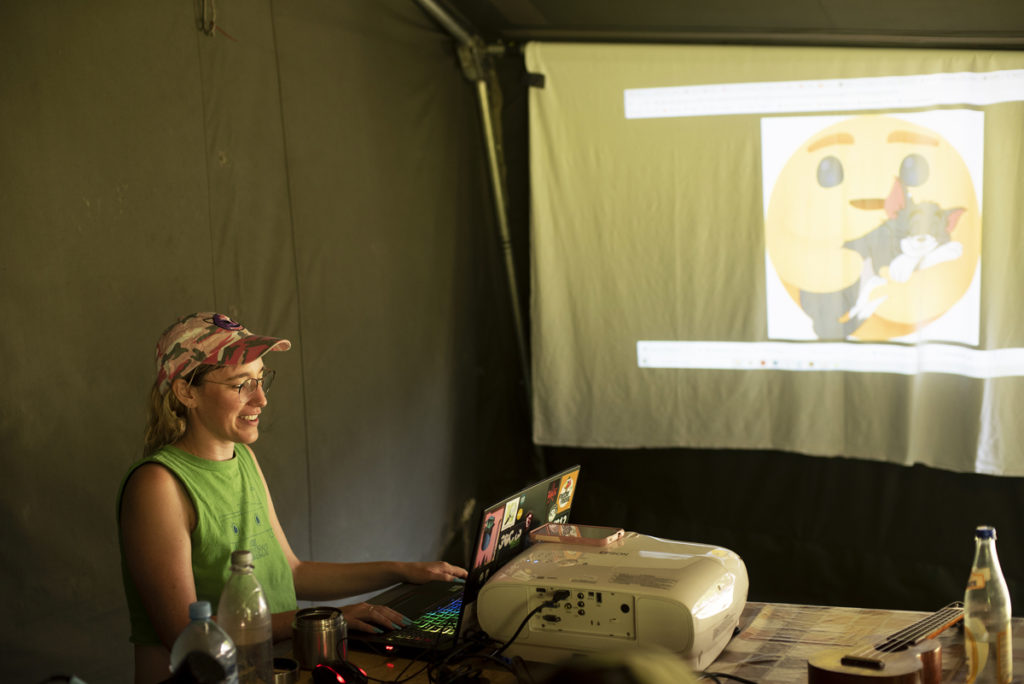
Meanwhile the pop-up tattoo studio was har at work under the cool shade of a nearby tree. A project by Leoni Voegelini, Rodolfo Costa Castro, Julian Jungel and Hannah Perner-Wilson, offers the PIFcamp participants a moment of rest and relaxation while they temporarily tattoo them with a design that captures each participant’s current project.
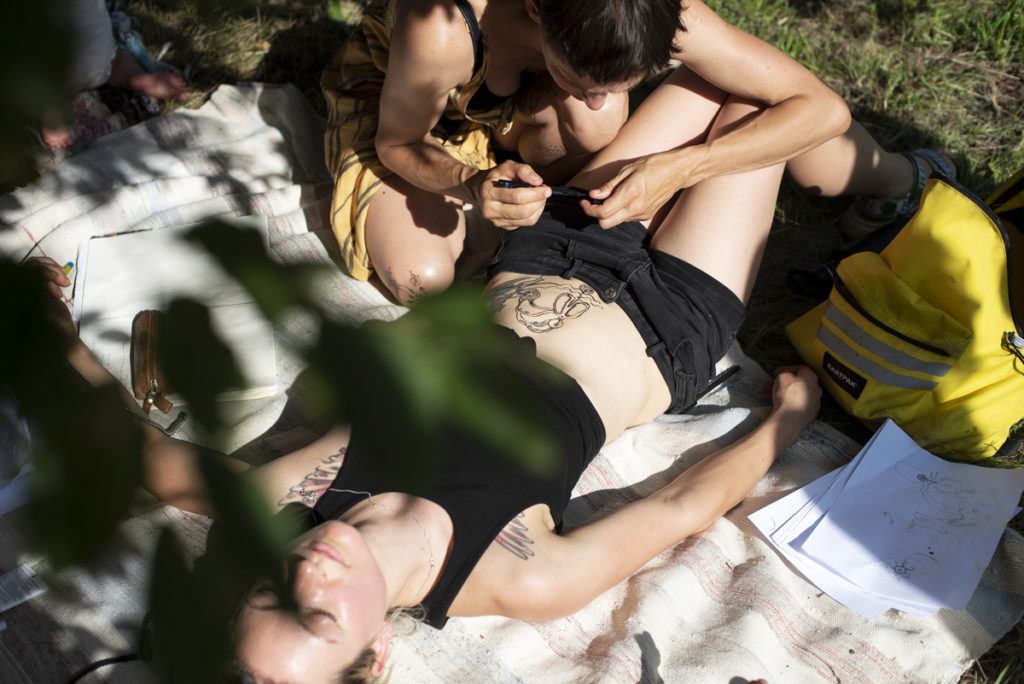
During the night, under the incredible starry sky of the Soča valley, three different situations melted together to form a unique experience for the night crowd: the classic bonfire, that reunited those participants seeking a bit of warmth, the amazing laser projections made by Bernhard directly on the trees in the surrounding woods and – once again – a long, enjoyable and participated jam session.
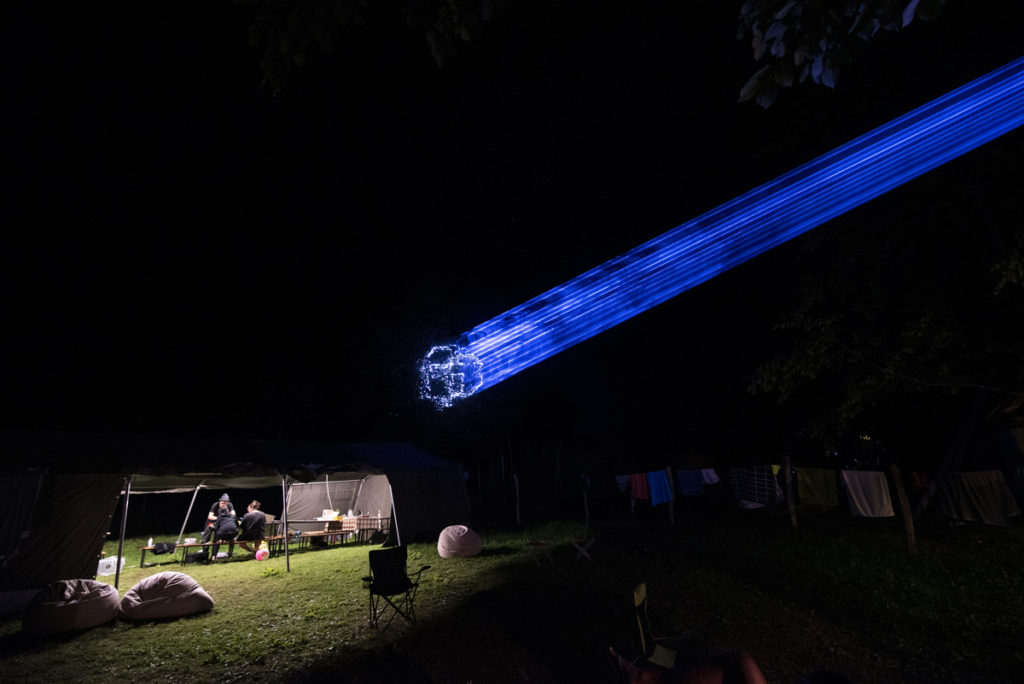
Many persisted until late, not afraid of the early morning mountain walk (and of the consequent morning mountain hangover) that was waiting for them the following day.
